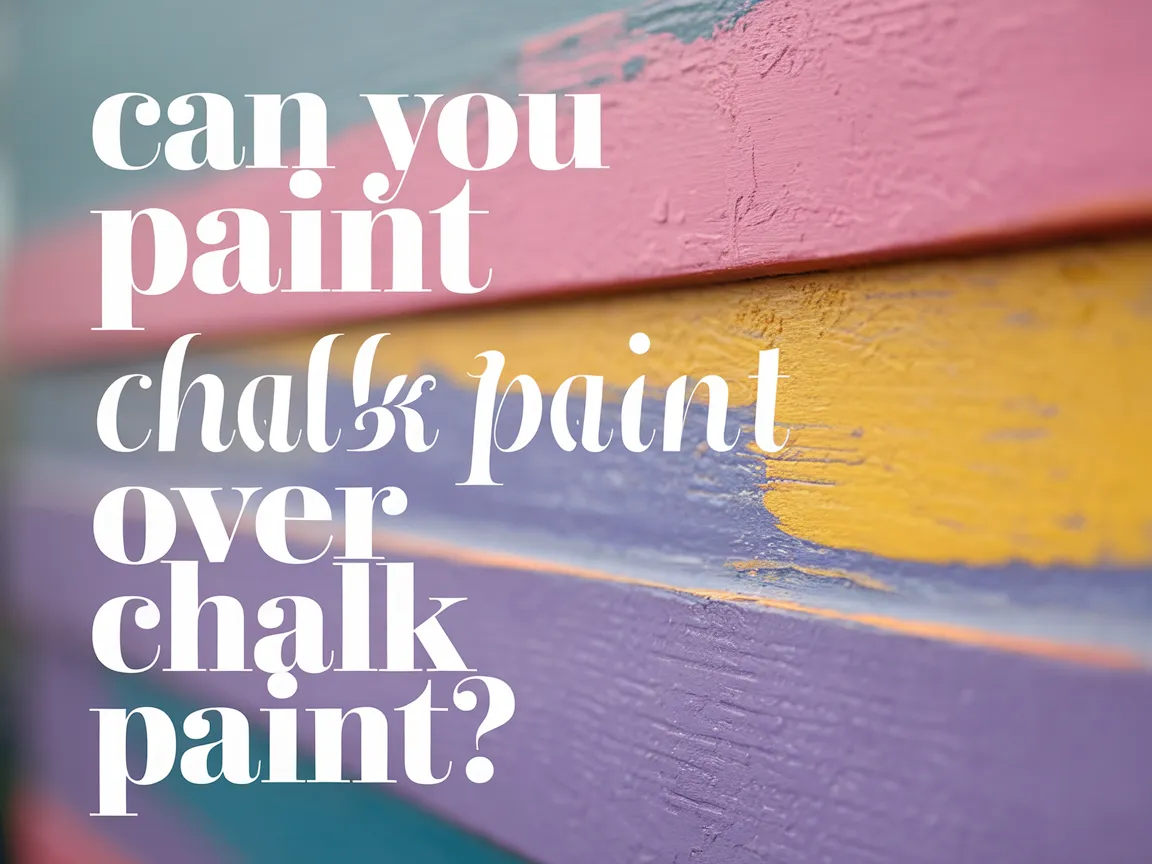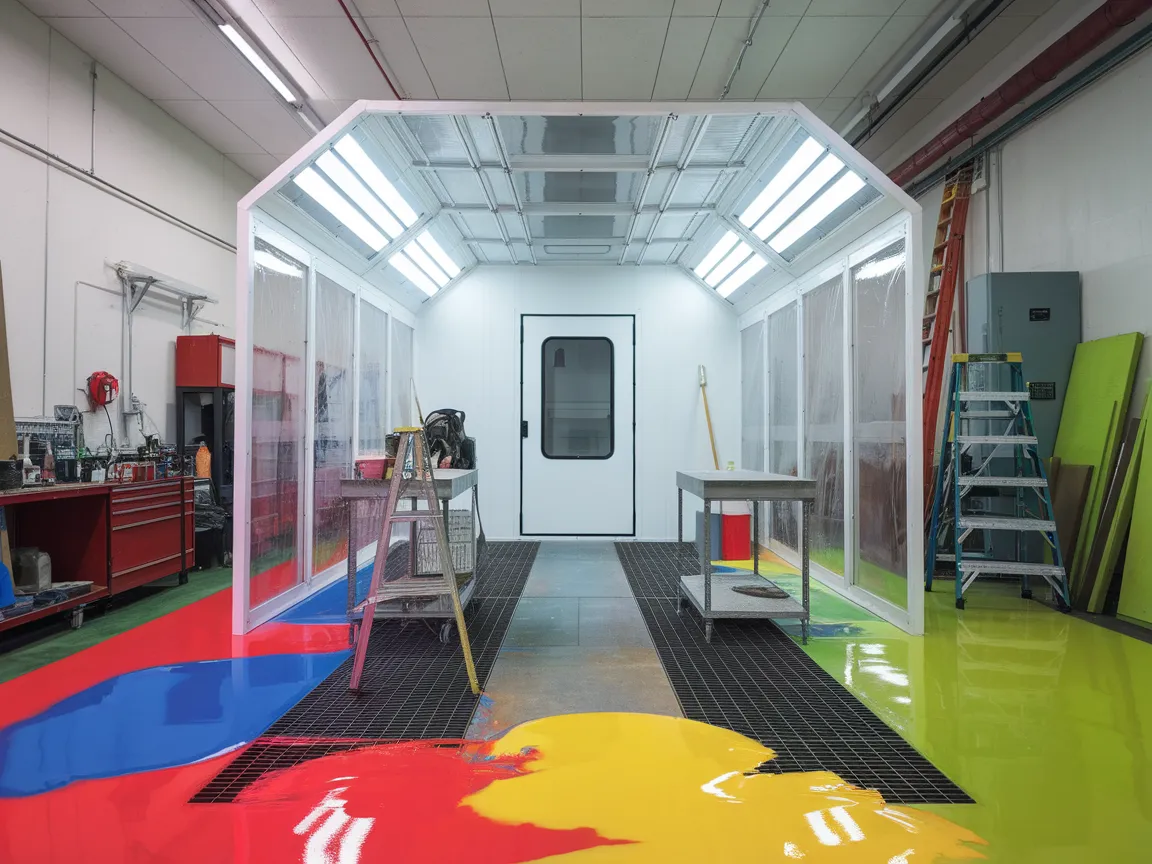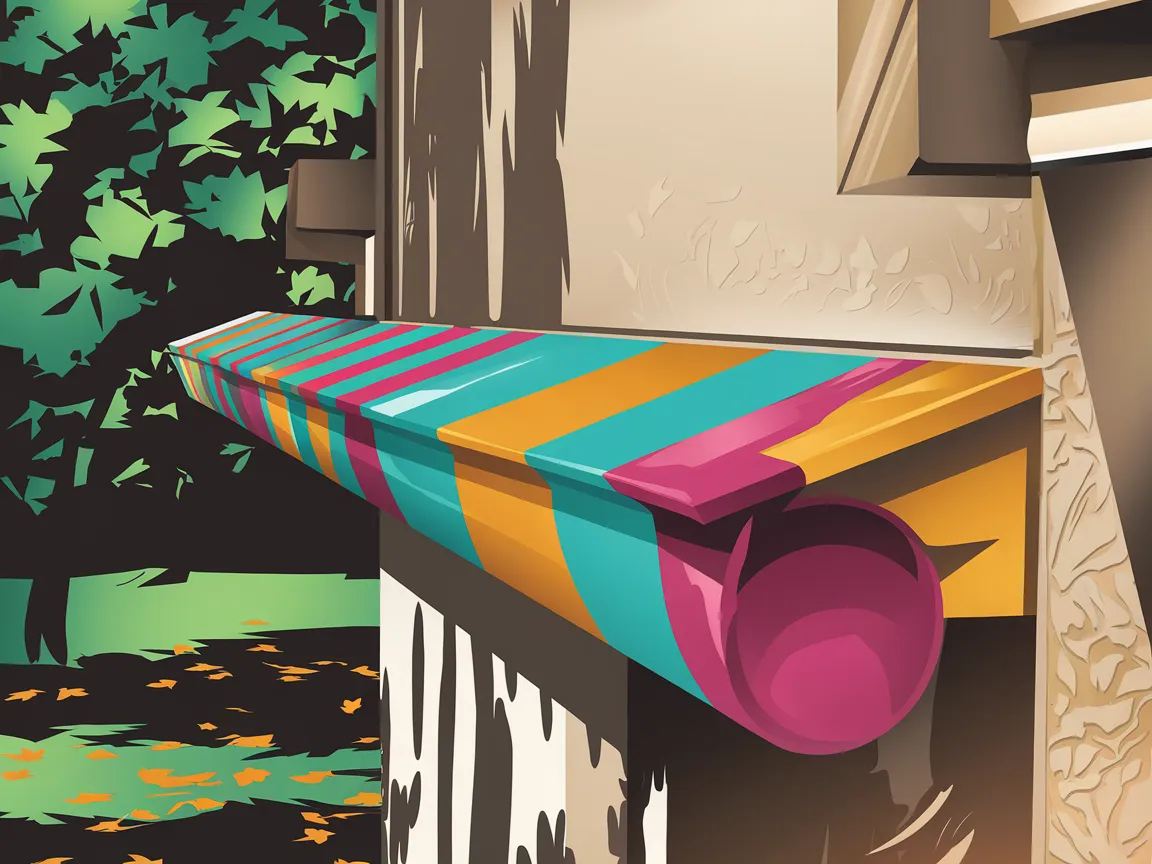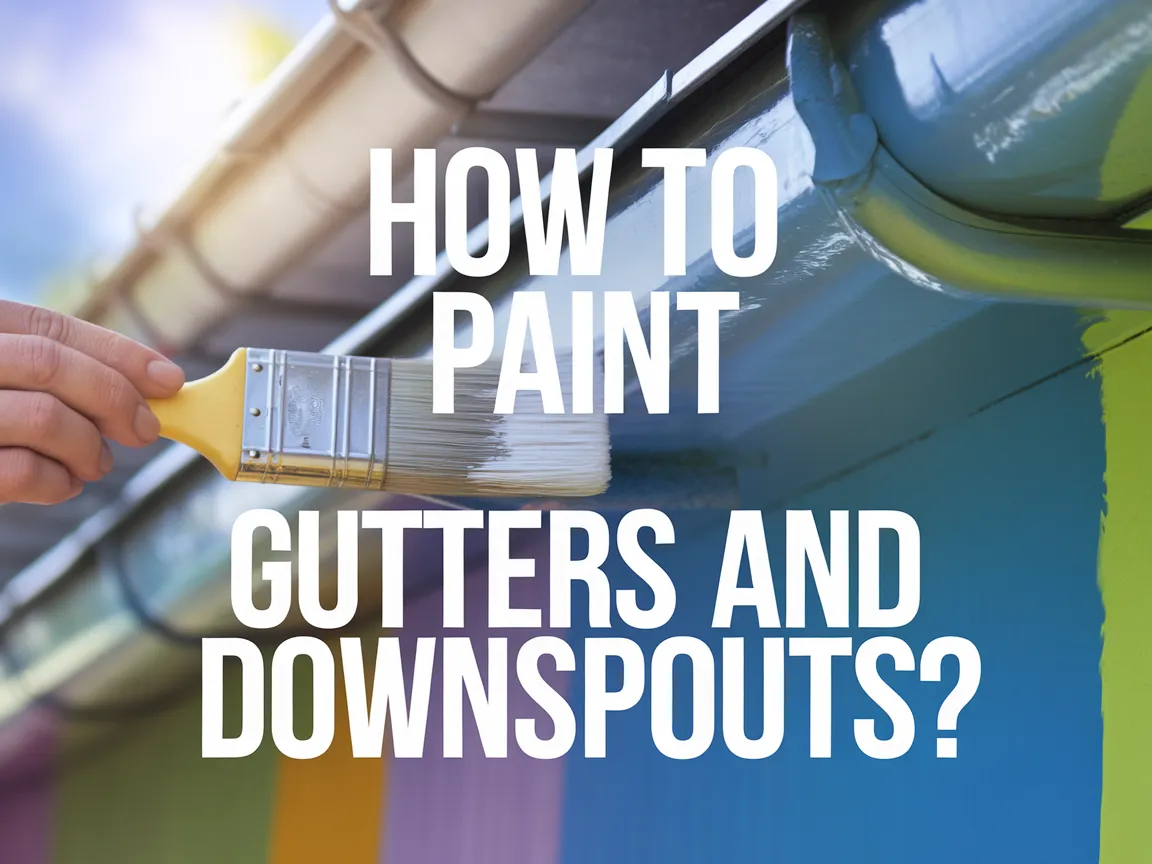Can You Paint Stone Exterior?
Published on: March 24, 2025 | Last Updated: January 7, 2025
Written By: Alisha Winters
Stone exterior is the outer layer of your house made from rocks. It’s tough, and it looks like nature, with all its pretty colors and patterns.
Can you paint stone exterior? It’s important to know because painting can change how your home looks and lasts. I’ve seen beautiful transformations when people paint their stone, but you need to do it right!
In this guide, I’ll cover the essentials, like the steps to paint stone exteriors, factors affecting success, color recommendations, types of stone suited for painting, and the common issues you might face. Plus, we’ll answer questions about concepts like can you paint stucco house and how long for stucco to dry before painting.
Contents
- 1 Can You Paint Stone Exterior?
- 2 What is Stone Exterior?
- 3 Crucial Considerations Before You Start Painting
- 4 Step-by-step Guide to Painting Stone Exteriors
- 5 Recommended Color Palette for Painting Stone Exteriors
- 6 Types Of Stone Suitable for Painting Exteriors
- 7 Factors Affecting the Success Of Painting Stone Exteriors
- 8 Common Issues Encountered When Painting Stone Exteriors
- 9 Finishing Touches for Your Painted Stone Exterior
- 10 Maintenance for Painted Stone Exteriors
- 11 Impact of Environmental Factors on Painted Stone Exteriors
- 12 Alternative Finishes for Stone Exteriors
- 13 Cost Comparison of Painting vs Alternative Finishes
- 14 Frequently Asked Questions About Painting Stone Exteriors
- 15 Conclusion
- 16 Useful Resources
Can You Paint Stone Exterior?
Yes, you can paint stone exterior. Use high-quality masonry paint for the best results. It bonds well and enhances durability. Make sure the surface is clean and dry before you start painting.
What is Stone Exterior?
A stone exterior is the outer surface of a building covered in natural stone, such as granite or limestone. This material is highly durable, with a lifespan exceeding 50 years, and offers thermal resistance, making buildings more energy-efficient. If you’re considering alternative exterior finishes, you might want to explore painting techniques for different surfaces.
The Finishing Touch
A freshly painted wall is a blank canvas. The best way to bring your room to life is with a single piece of statement art that ties everything together.
Browse Wall Art at Big Wall DecorYou might wonder, can you paint stone exteriors? I once convinced a friend to consider it for their old stone home. We discussed options, tools, and techniques, making it exciting to think about. If you’re looking to transform your stone surface, mastering the right painting technique is crucial for achieving a professional bright yellow paint application.
I can’t tell you how often I’ve used it to add flair to structures. In one project, I painted the stone walls of a historic home, blending new colors while preserving their character. When tackling similar projects, always research the right adhesives or paints, especially for uneven surfaces like stone. If you’re curious about expanding your painting techniques, exploring alternative painting surfaces can open up new creative possibilities.
Crucial Considerations Before You Start Painting
What do you need to prepare before painting stone exteriors?
- High-Quality Exterior Paint: Use a durable product like Behr Premium Elastomeric Paint. It withstands harsh weather and prevents moisture damage.
- Paint Sprayer: Consider the Wagner Control Pro 150. This covers rough stone efficiently, allowing for even application in less time.
- Primer: Use Zinsser Bullseye 1-2-3 Primer beforehand. It ensures proper adhesion, which is crucial for porous surfaces like stone.
- Paint Roller with Extension Pole: A roller like the Little Giant Pro Roller helps you reach heights easily, making your work faster and less strenuous.
- Drop Cloths: Get heavy-duty, 10 ft x 12 ft (3.05 M X 3.66 M) drop cloths. They protect your surroundings from paint splatters and spills.
We’ve wrapped up essential factors to keep in mind before beginning your painting project. Let us turn our attention to a step-by-step approach for painting stone exteriors.
Also See: Can Rain Gutters Be Painted? Here’s What to Know
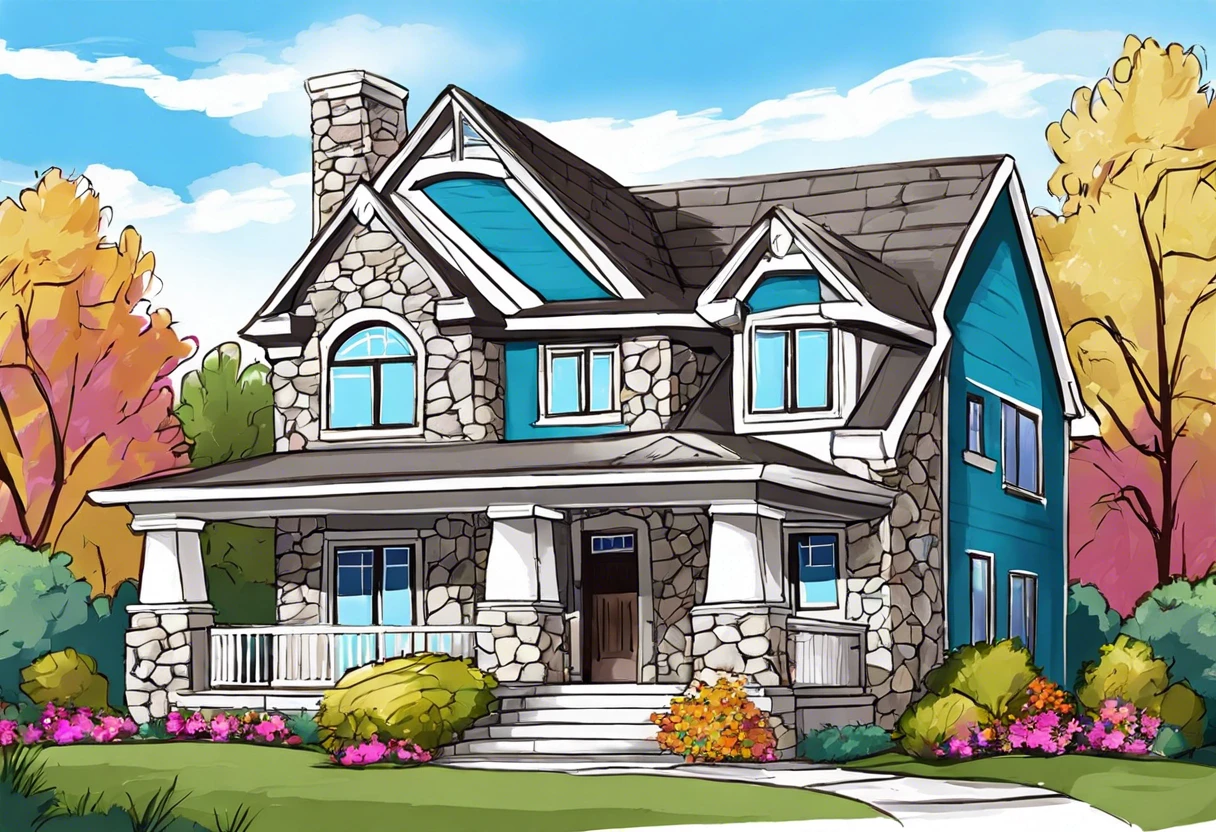
The Finishing Touch
A freshly painted wall is a blank canvas. The best way to bring your room to life is with a single piece of statement art that ties everything together.
Browse Wall Art at Big Wall DecorStep-by-step Guide to Painting Stone Exteriors
This guide covers steps to effectively paint a stone exterior.
-
Clean the Stone Surface
Start by thoroughly cleaning the stone. Use a pressure washer set at 1400 to 2500 psi (Pounds Per Square Inch) for deep cleaning; it removes dirt, algae, and old paint.
Scrub stains with a nylon brush and a mixture of water and mild detergent. Avoid harsh chemicals—they can damage the stone!
-
Patch Cracks and Damage
Inspect the stone for cracks or damaged areas. Fill them with a high-quality, paintable caulk on porous stones or use a patching compound on concrete ones.
Wait 24 hours for the materials to cure completely. This step ensures the paint adheres well and lasts longer!
-
Select Appropriate Paint
Choose a high-performance acrylic latex paint rated for exterior painting techniques. I once used regular indoor paint which chipped quickly. Make sure to select breathable paint that allows moisture to escape. If you’re considering painting metal surfaces like storm doors, you might want to learn how to properly paint aluminum storm doors.
Opt for a satin or semi-gloss finish for better durability and easy cleaning. Prices vary, but expect to spend about $30 to $70 (USD) per gallon (3.78 Liters) based on quality.
-
Prime the Stone Surface
Applying primer helps the paint stick better. Use a bonding primer specifically designed for masonry or stone surfaces—it creates a solid base layer and enhances the paint’s color.
Let the primer dry according to the manufacturer’s instructions, usually around 1 to 2 hours. This ensures it’s ready for the next vibrant layer!
-
Apply the Paint
Using a paint roller with a long nap (At Least 19 Mm or 3/4 Inch) works great for painting stone because it covers the texture well. Use a brush for smaller areas around edges or highly textured spots. If you’re considering alternative painting methods, you might want to explore painting techniques with airless sprayers.
Apply paint in a thin coat, letting each layer dry before adding another—one or two full coats typically do the job. Ensure proper ventilation as moisture needs to escape while you work!
-
Seal the Painted Surface
After the paint has dried, apply a sealer to finish the process. Choose a breathable film-forming sealer to maintain durability and resist peeling.
A sealer protects against moisture for up to 5 years! A little goes a long way—follow the manufacturer’s application instructions.
We’ve wrapped up the step-by-step process for painting stone exteriors here. Let us turn our attention to the suggested color palette.
Recommended Color Palette for Painting Stone Exteriors
I recommend a “Natural Realm” palette, featuring earthy tones that harmonize beautifully with the stone, giving your exterior a timeless look.
| Color Box | Hex Code | Color Name |
|---|---|---|
| #A89F91 | Stone Taupe | |
| #7B6B62 | Deep Earth | |
| #BEC8B4 | Soft Sage | |
| #4A4A4A | Charcoal |
We covered a recommended color palette for painting stone exteriors. We will now cover the types of stone suitable for painting exteriors.
Types Of Stone Suitable for Painting Exteriors
Let’s explore different types of stone: Granite, Limestone, Slate, and Sandstone.
-
Granite
Granite is a tough igneous rock, commonly used in kitchens, but it can also serve as an exterior surface. With a hardness of 6 to 7 on the Mohs scale, it needs a high-quality exterior primer before painting. If you’re considering painting a specific surface like a bathroom sink, painting techniques vary by material.
-
Limestone
Limestone, a sedimentary rock, has a softer surface and absorbs moisture well. Use a breathable acrylic paint, as it typically has a porosity rating of 30-40%, which affects durability.
-
Slate
Slate is known for its layered appearance and durability, with a hardness of about 5 on the Mohs scale. While you can paint slate, epoxy-based paint enhances its longevity.
-
Sandstone
Sandstone has a gritty texture and is often reddish-brown. It absorbs paint well when prepped properly, so use an aliphatic urethane coating to maintain its natural beauty.
I’ve found that painting limestone yields stunning results. Its absorbency makes colors pop, enhancing any exterior!
So far we covered the different stone types ideal for exterior painting. Let’s look at the factors influencing successful stone painting.
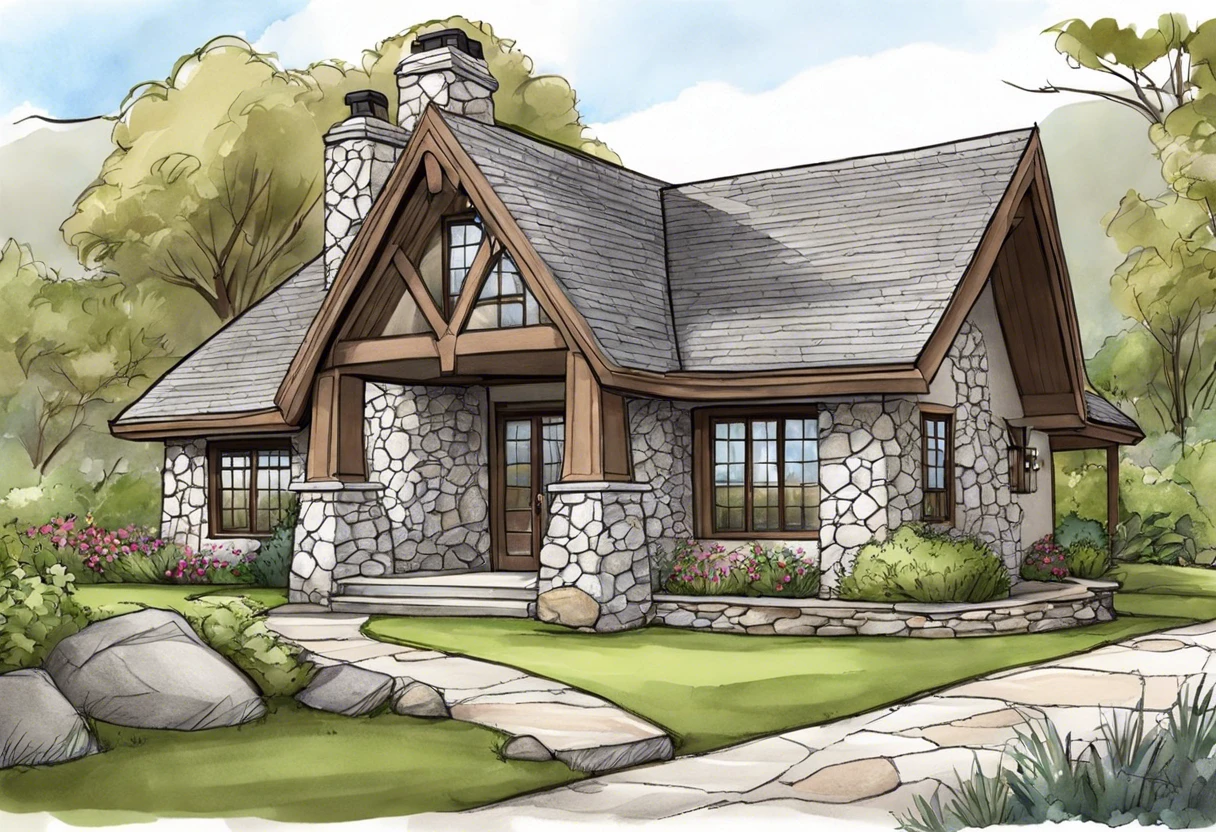
Factors Affecting the Success Of Painting Stone Exteriors
What factors influence your ability to paint stone surfaces effectively?
-
Surface Texture Rough surfaces hold paint better, while smooth stones can lead to disappointment.
-
Weather Conditions Extreme heat or cold can affect the paint’s adhesion; choose moderate weather for the best results.
-
Type of Paint Using the right paint for stone is crucial. A high-quality masonry paint lasts well outdoors.
-
Moisture Levels Paint won’t stick if the stone isn’t dry. Wait until after any rain.
Common Issues Encountered When Painting Stone Exteriors
My friend once tried to paint her stone exterior but struggled with the paint peeling off due to moisture (Wetness) inside the stone. It was a mess!
To fix this, she used a primer designed for porous surfaces and allowed it 24 hours to dry, ensuring no moisture affected the fresh coat. Surface prep is crucial!
Finishing Touches for Your Painted Stone Exterior
After sealing your painted stone, maintain it regularly. Clean with a mild solution of water and a pH-balanced cleaner each month, using a soft brush to avoid damage.
Start by inspecting the paint’s adhesion to the stone. After one month, conduct a Maltese test (Peel Off a Tape Strip) to check the paint’s bond. Use a product like FrogTape.
If you’re painting again, use a high-quality elastomeric (Flexible) paint like Zinsser Perma-White. Consider a three-coat system for better durability. Apply each coat at a temperature of at least 10°C (50°F). When perfecting your paint application, you might want to exterior siding painting techniques.
The Finishing Touch
A freshly painted wall is a blank canvas. The best way to bring your room to life is with a single piece of statement art that ties everything together.
Browse Wall Art at Big Wall DecorMaintenance for Painted Stone Exteriors
Once you’ve painted your stone exterior, keeping it looking fresh is key. Let’s talk about some essential maintenance tips.
-
Regular Cleaning
Clean your painted stone at least once a month. Use a soft brush and a mixture of warm water and mild detergent. This prevents dirt buildup and keeps the colors vibrant.
-
Inspect for Damage
Check for peeling or cracks every six months. Early detection means you can reapply paint or touch up areas before they get worse.
-
Moisture Control
Keep an eye on your surroundings. Ensure rainwater isn’t pooling against the stone. This can lead to moisture issues and paint failure.
-
Touch-Ups
Have some leftover paint handy for quick touch-ups. If you notice wear in high-traffic areas, a little refreshing can go a long way!
Impact of Environmental Factors on Painted Stone Exteriors
Weather can change how well your paint job holds up. Here’s what you should know.
| Environmental Factor | Effect on Paint | Recommended Action |
|---|---|---|
| Extreme Heat | Can cause paint to fade and peel. | Apply during cooler months. |
| Heavy Rain | Leads to moisture getting trapped. | Ensure proper sealing. |
| Snow and Ice | Can cause paint to crack and chip. | Use a flexible paint designed for cold climates. |
| High UV Exposure | Fades color and weakens the paint. | Consider UV-resistant paint. |
Alternative Finishes for Stone Exteriors
Wondering about other options besides paint for your stone exterior? Let’s dive in!
-
Staining
Staining allows the natural beauty of stone to shine through. Unlike paint, stains seep into the stone, preserving its texture.
Expect to spend around $30 to $50 (USD) per gallon (3.78 Liters) for quality stone stain. It enhances color but requires reapplication every 3 to 5 years.
-
Sealing
Sealing protects your stone from moisture and dirt without altering its look. A good sealer can last up to 5 years!
Price for sealers is about $20 to $40 (USD) per gallon (3.78 Liters), depending on the brand. Use a breathable sealant for best results.
-
Lime Wash
Lime wash is a natural product that provides a soft, matte finish. It allows the stone to breathe, making it perfect for historic buildings.
The cost is typically $25 to $40 (USD) per gallon (3.78 Liters). It’s eco-friendly, and won’t peel or crack when properly applied.
Cost Comparison of Painting vs Alternative Finishes
Let’s see how the costs stack up between painting and alternative finishes.
| Finish Type | Estimated Cost per Gallon (3.78 Liters) | Durability (Years) |
|---|---|---|
| Exterior Paint | $30 – $70 | 5 – 15 |
| Stone Stain | $30 – $50 | 3 – 5 |
| Sealer | $20 – $40 | Up to 5 |
| Lime Wash | $25 – $40 | 3 – 5 |
Frequently Asked Questions About Painting Stone Exteriors
Now, let us look at some questions I typically get asked:
Is It Safe to Paint Natural Stone?
Yes, it is safe to paint natural stone. However, using the right type of paint and techniques is crucial to ensure adhesion and safety, which affects durability.
How Long Does Painted Stone Last?
This depends on environmental conditions, but painted stone can last anywhere from 5 to 15 years. Quality paint and proper application techniques can vastly extend your stone exterior’s lifetime. If you’re wondering about specific paint compatibility, you might want to explore paint brand matching techniques.
Can I Change the Color Of My Stone Exterior?
Yes, you can easily change the color of your stone exterior. A good primer, designed for stone surfaces, followed by quality exterior paint will give you a beautiful finish.
What is the Best Time Of Year to Paint Stone Exteriors?
The best time of year to paint stone exteriors is spring or fall. Avoid extreme temperatures for both application and curing, which ideally should be between 10°C and 30°C (50°F and 86°F).
Will Painting Stone Increase Maintenance Requirements?
Yes, painting stone can increase maintenance requirements. Painted surfaces may require more frequent cleanings and occasional touch-ups compared to natural stone.
What Type Of Paint is Best for Stone Exteriors?
Acrylic latex paint is the best choice for stone exteriors. It adheres well and allows breathability, preventing moisture from getting trapped, which can damage the surface.
How Do I Prepare Stone for Painting?
To prepare stone for painting, clean it thoroughly and repair any damage. Surface preparation improves adhesion and ensures a smooth, long-lasting finish.
Can I Use a Roller to Paint My Stone Exterior?
Yes, you can use a roller to paint your stone exterior. A thick nap roller helps to cover the textured surfaces effectively.
How Often Should I Repaint My Stone Exterior?
You should repaint your stone exterior every 5 to 10 years. This helps maintain appearance and performance, especially in harsh climates.
What Factors Affect the Longevity Of Painted Stone?
Factors such as weather conditions, paint quality, and maintenance routines significantly affect the longevity of your painted stone. Proper care leads to improved durability.
Also See: Can You Paint 2 Accent Walls? Transform Your Space!
Conclusion
I hope this gave you what you needed to decide on your project. We covered what stone exterior is, crucial considerations before painting, a step-by-step guide, recommended color palettes, types of stone suitable for painting, factors affecting success, common issues, finishing touches, and DIY project ideas.
So, can you paint stone exterior? Yes, it’s possible, but attention to detail is key. Use the right paint, follow steps carefully, and understand the stone type for optimal results. Your home can shine beautifully with some thoughtful touches.
For more expert insights and guidance, visit Paint Answers, where we’re committed to providing you with the latest technical expertise.
Useful Resources
- Betti, C., & Sale, T. (2012). Drawing: A Contemporary Approach (6th ed.). Belmont, CA: Cengage Learning.
- How to Paint Over an Exterior Rock Facade on the House
- How to Paint Exterior Stone to Freshen Up Your House
- How to Paint Over an Exterior Rock Facade on the House
Experienced interior designer with 15+ years in transforming spaces, blending artistry with expertise in color and design. Rhode Island School of Design graduate, specializing in restorations and modern makeovers.
Exterior, Siding






